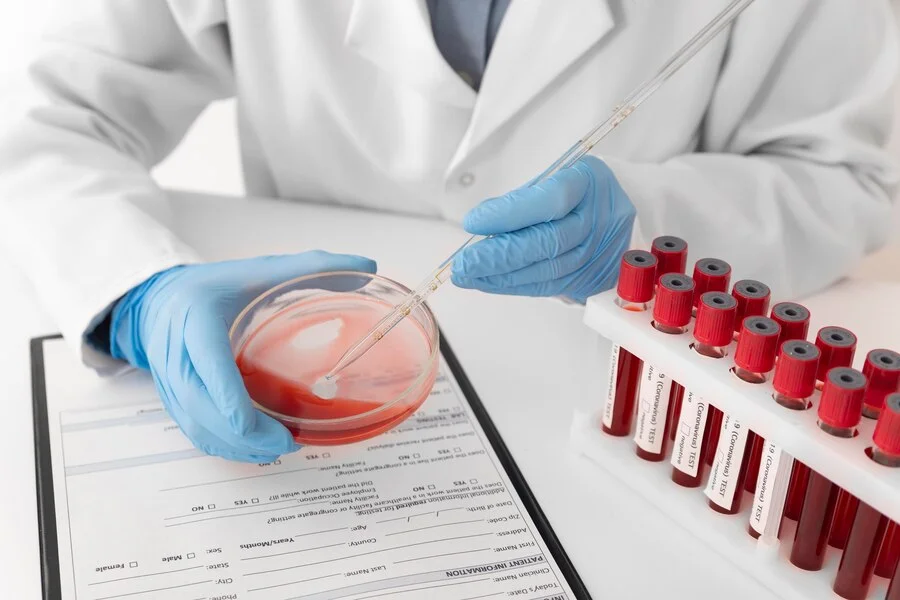Shedding Light on Anemia, Dispelling Myths, and Championing Strategies for Optimal
Blood Health
Anemia is a common blood disorder that affects millions of people
worldwide, causing fatigue, weakness, and other symptoms that can impact daily life. While
anemia may seem daunting, with proper diagnosis and treatment, individuals can effectively
manage their condition and improve their quality of life. In this article, we delve into the
complexities of anemia, dispel myths, and offer empowering strategies for maintaining
optimal blood health.
Exploring the Basics of Blood Deficiency
Anemia occurs when the body lacks enough healthy red blood cells
or hemoglobin to carry oxygen to the body's tissues. This can result in symptoms such as
fatigue, weakness, pale skin, shortness of breath, dizziness, and cold hands and feet.
Anemia can be caused by various factors, including nutritional deficiencies (such as iron,
vitamin B12, or folate), chronic diseases (such as kidney disease or cancer), blood loss
(such as from heavy menstruation or gastrointestinal bleeding), or genetic conditions (such
as sickle cell disease or thalassemia).
Dispelling Myths and Misconceptions
Despite its prevalence, anemia is often surrounded by myths and
misconceptions. One common misconception is that anemia only affects individuals who do not
eat enough red meat. While iron deficiency anemia is indeed common, anemia can also be
caused by other factors such as vitamin deficiencies, chronic diseases, or genetic
conditions. Another myth is that anemia is simply a sign of being tired or run-down, when in
fact, it is a legitimate medical condition that requires proper diagnosis and treatment.
Identifying Symptoms and Risk Factors
Anemia can manifest in various ways, depending on its underlying cause and severity. Common
symptoms include fatigue, weakness, pale skin, shortness of breath, dizziness, and cold
hands and feet. Risk factors for anemia include a diet low in iron, vitamin B12, or folate;
chronic diseases such as kidney disease or cancer; gastrointestinal conditions such as
celiac disease or inflammatory bowel disease; menstruation or pregnancy-related blood loss;
and genetic conditions such as sickle cell disease or thalassemia.
Diagnosis and Treatment Options
Diagnosis of anemia typically involves a blood test to measure red blood cell count,
hemoglobin levels, and other markers of blood health. Treatment options for anemia depend on
its underlying cause and severity. For iron deficiency anemia, treatment may involve iron
supplementation, dietary changes, or addressing the underlying cause of blood loss. For
vitamin deficiency anemia, treatment may involve vitamin supplementation or dietary changes.
In cases of chronic or severe anemia, additional treatments such as blood transfusions or
medications may be necessary.
Nurturing Blood Health and Vitality
Prevention of anemia involves maintaining a balanced diet rich in iron, vitamin B12, and
folate; managing chronic diseases effectively; and addressing risk factors such as heavy
menstruation or gastrointestinal bleeding. Lifestyle tips for individuals with anemia
include eating iron-rich foods such as lean meats, poultry, fish, beans, lentils, leafy
green vegetables, and fortified cereals; avoiding excessive caffeine or alcohol consumption;
and practicing stress management techniques to support overall well-being.
In Conclusion: Empowering Blood Health
Anemia is a common blood disorder that can have significant impacts on daily life, but with
the right knowledge and strategies, individuals can effectively manage their condition and
improve their quality of life. By understanding the fundamentals of anemia, dispelling
myths, and embracing strategies for diagnosis, treatment, and prevention, individuals can
take control of their blood health and vitality. Let us continue to raise awareness,
advocate for access to healthcare resources, and support research efforts to improve anemia
diagnosis, treatment, and care. Together, we can empower individuals living with anemia to
thrive and enjoy a life filled with health, vitality, and vitality.





